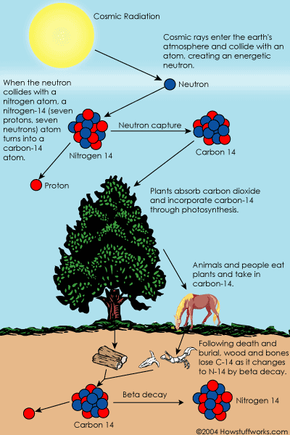The Allahabad High Court directed the ASI to carbon date the ‘Shivling’ discovered on the premises of the Gyanvapi mosque without inflicting any structural damage.

What is Carbon Dating?
- Carbon dating is a popular method for establishing the age of once-living organic materials.
- The approach relies on the radioactive decay of Carbon-14 (C-14), a carbon isotope with an atomic mass of 14.
- It operates by measuring the C-12 to C-14 ratio in the atmosphere as well as in plants and animals that obtain carbon through photosynthesis or food consumption.
- Carbon-14 has a half-life of 5,730 40 years, which means that half of the radioisotope existing at any particular time will spontaneously disintegrate during the next 5,730 years.
- Because carbon-14 decays at a consistent pace, the amount of leftover radiocarbon in an organism can be used to estimate the date of death.
Carbon Dating’s Limitations
- Carbon dating has limitations and cannot be used in all situations.
- It cannot be used to determine the age of non-living things such as rocks.
- Carbon dating becomes less reliable as the amount of measurable C-14 decreases for objects older than 40,000-50,000 years.
- Other radiometric dating methods, which rely on the decay of radioactive elements present in the substance, are used to calculate the age of inanimate items.
- Potassium-argon dating and uranium-thorium-lead dating are two examples of such procedures, which use the ratios of certain isotopes to estimate the age of rocks.
Other Methods of Dating
- Aside from radiometric dating, there are other methods for determining the age of items.
- CRN is one such technology that uses radioactive decay to estimate age and is often used to study the age of ice cores in the Polar Regions.
- Potassium-argon dating: A radiometric dating method that determines the age of rocks by measuring the ratio of potassium to argon isotopes.
- Uranium-thorium-lead dating: A radiometric dating method that estimates the age of rocks by analysing the ratios of uranium, thorium, and lead isotopes.
Source: https://indianexpress.com/article/explained/explained-sci-tech/what-is-carbon-dating-how-does-varanasi-court-order-impact-dispute-8208790/
